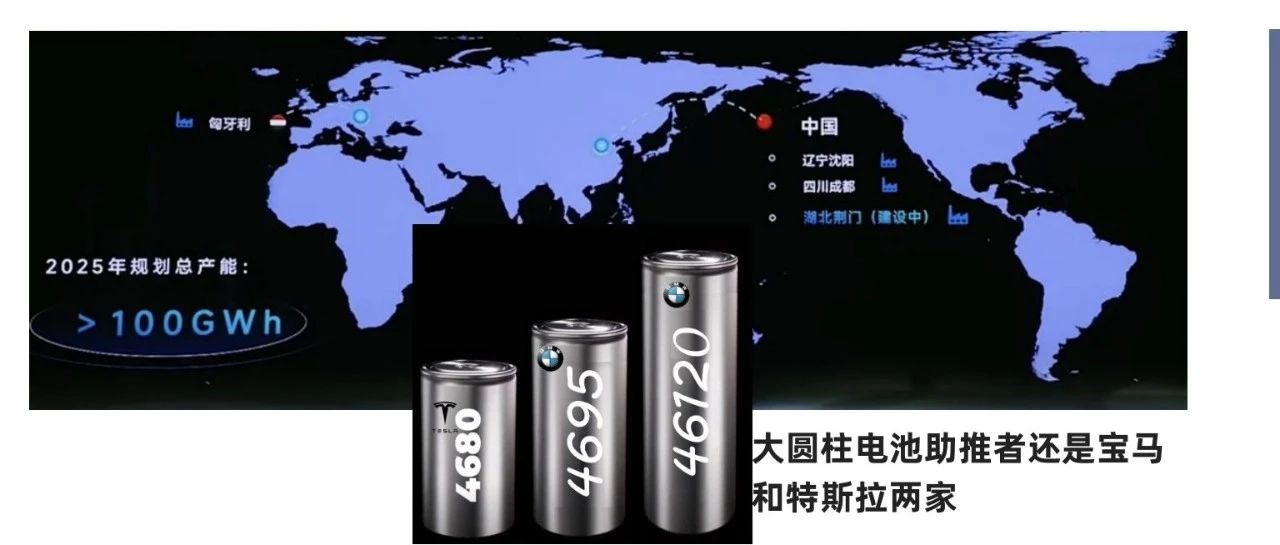Author:Zhu Yulong
Last week, Yan Yan and I filmed a video about the summary of the 2022 battery conference, which is expected to be released this weekend. The video mentioned that the name given by EVE Energy to the battery is simple and straightforward. Today, let’s review the battery conference of this company as a video warm-up (just finished taking medicine to reduce fever, feeling a bit dizzy, so I’ll keep it simple).
The main points of the entire conference are as follows:
-
The large cylindrical pilot production line has been put into operation, with a cumulative production of more than 500,000 battery cells and an overall yield rate of over 92%. If calculated based on one 3.65V 24Ah battery cell, these many batteries would be approximately 4.38MWh, which is still in a trial stage. For comparison, in February 2022, Tesla produced approximately 1 million 4680 batteries.
-
350Wh/kg research and development samples. The biggest problem is still the formula.
-
From the production capacity perspective, EVE Energy’s 20GWh large cylindrical factory in Jingmen, Hubei Province, is about to land, and the total production capacity of large cylindrical batteries will exceed 100GWh by 2025. In terms of attitude, EVE Energy has made a heavy investment in the “π” type cooling system, which is mainly aimed at fast charging requirements.
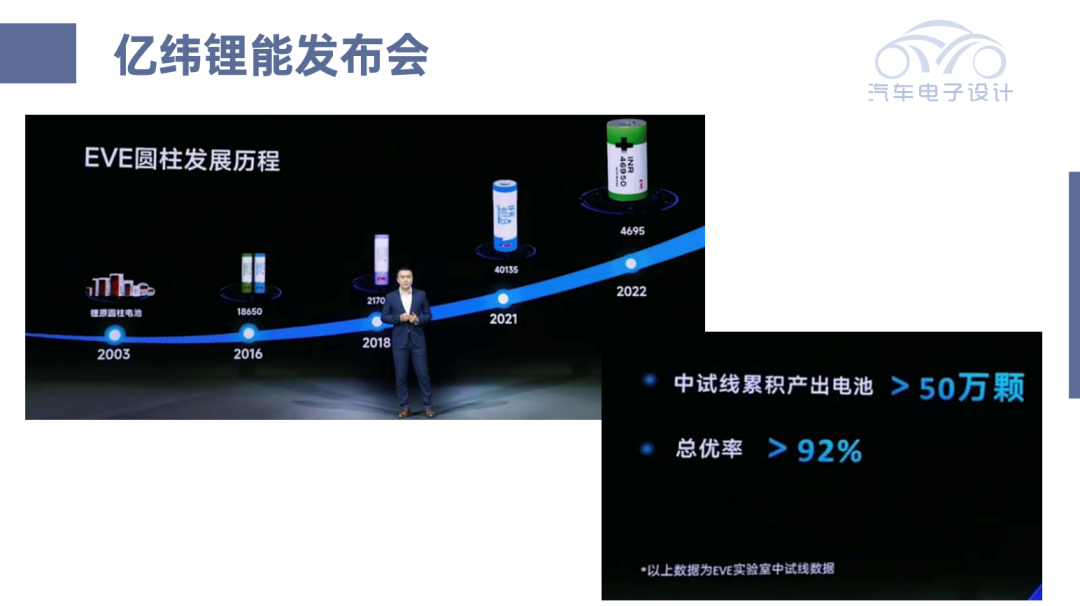
Planning and Design of the 46 Series Large Cylindrical Battery
With the support of BMW as a major customer, EVE Energy is very active in investing in large cylindrical batteries. In 2025, on the one hand, BMW has needs in both China and Europe, while other potential domestic customers are also testing it. Of course, by the time it reaches 2023, it will still be in the design and development stage. Therefore, EVE Energy’s achievement of 100GWh by 2025 is already at the forefront. The overall investment of domestic companies such as CATL and Farasis Energy depends on the evaluation of top automotive customers in the first half of 2023-2024.
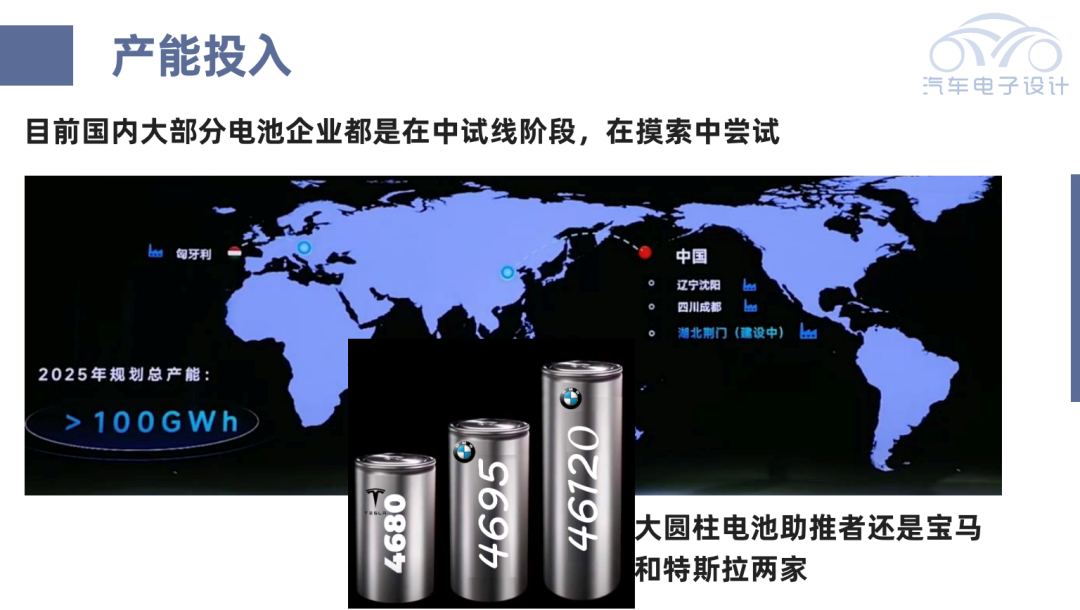 This far-reaching battery product with a density of 350Wh/kg is larger in volume than the 4680, which accounts for its higher energy density. Also, being in the sample stage allows for some experimental attempts at the most radical chemical systems and design ratios. Our recent goal should be the 280-300Wh/kg for cylindrical batteries.
This far-reaching battery product with a density of 350Wh/kg is larger in volume than the 4680, which accounts for its higher energy density. Also, being in the sample stage allows for some experimental attempts at the most radical chemical systems and design ratios. Our recent goal should be the 280-300Wh/kg for cylindrical batteries.
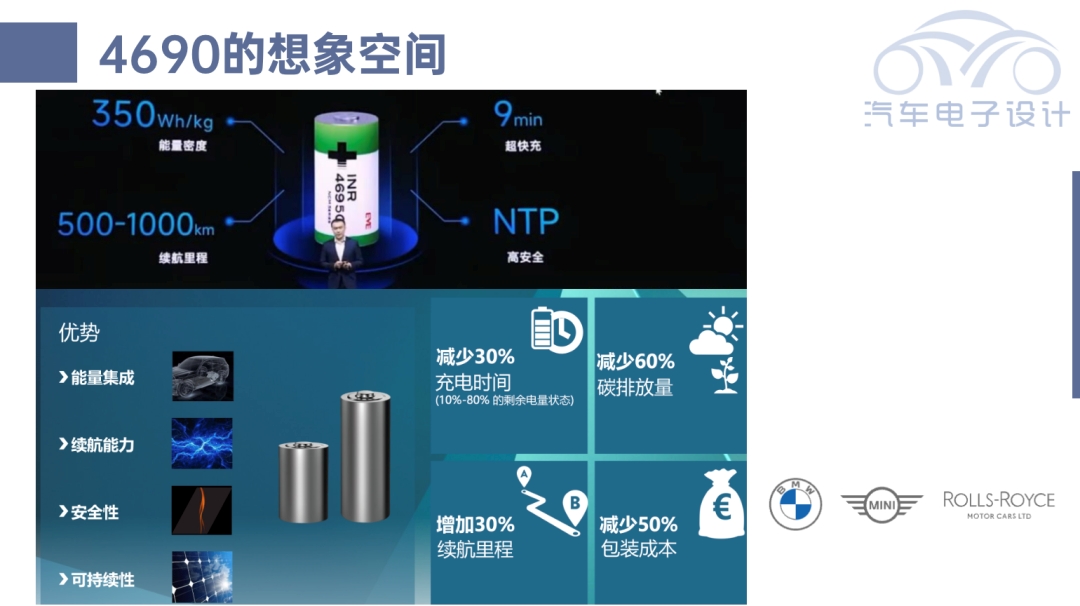
In specific pack designs, the 4695 series battery system uses a “Π” cooling system, which constructs heat transfer channels at the bottom and two sides of the cell, enabling three-dimensional heat transfer. The heat transfer area is calculated to be 52.3 square millimeters/Wh, which supports the system for a fast charge duration of 9 minutes with the fast charging function of the cell. If the energy density of the pack is 260Wh/kg, assuming a weight efficiency of 85%, the energy density of the cell is relatively high.
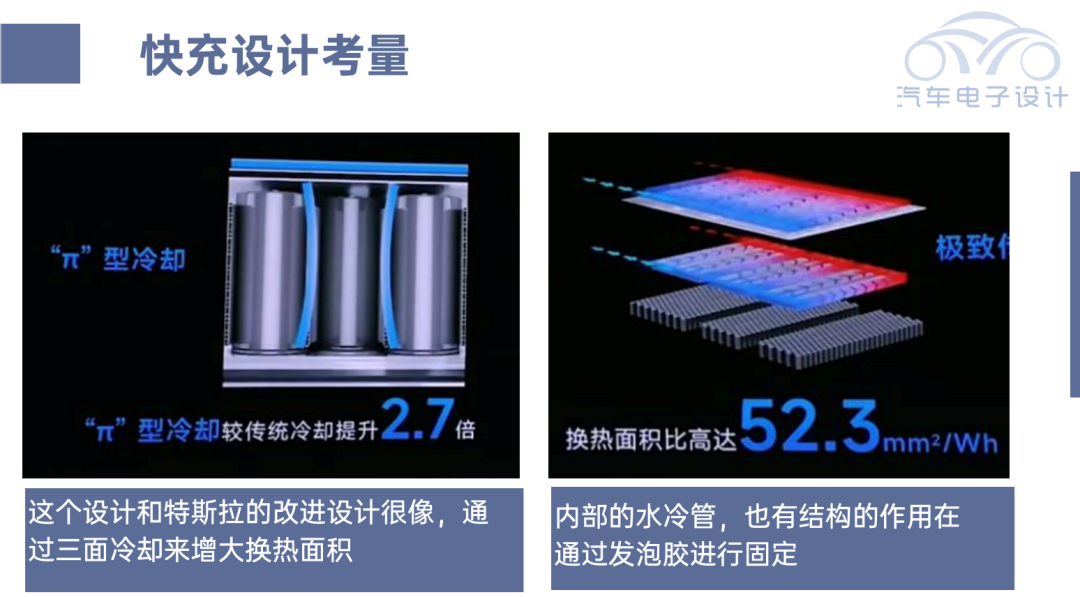
Here, the entire bottom of the pack is designed for pressure relief. By increasing the size of the pressure relief valve, the pressure relief area accounts for 42.5%, and 75% of the heat can be manipulated through a 5 second spray at the bottom when the cell fails. The battery system can quickly dispel high-temperature gases and substances through independent pressure relief channels. This means that the cells can be densely packed, but safety design is critical.

Looking at it now, before the large cylinder batteries develop on a large scale between 2023-2024, cost advantages cannot emerge. The biggest benefit is a full-life cycle NTP.
Other cutting-edge batteries- Lithium-metal secondary battery: Improved processability and uniformity of lithium metal negative electrode charge transfer by constructing a three-dimensional scaffold structure for the negative electrode. Achieved an energy density of 350Wh/kg and 500 cycles for 5Ah cells, and an energy density of 450Wh/kg and 200 cycles for 10Ah cells.
-
Solid-state battery: A full solid-state, thin-film soft pack battery based on halide solid electrolytes.
-
Semi-solid-state battery: A 50Ah soft pack battery currently achieving an energy density of 330Wh/kg and over 1000 cycles.
-
Sodium-ion battery: Large cylindrical sodium-ion battery with layered oxide positive electrodes and hard carbon negative electrodes, with an aluminum shell as the carrier. 135Wh/kg energy density, with preparation work before the pilot run.
That’s it for now. We need to do the layout, but there isn’t much output at the moment.
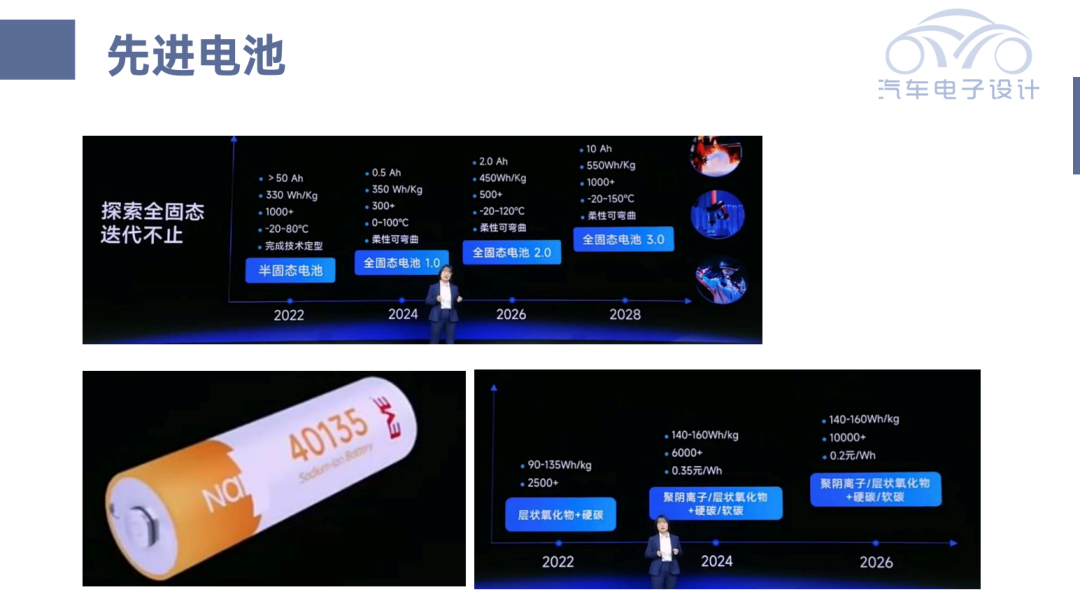
Conclusion: EEW Energy is indeed a power battery company that we need to observe for a long time, but as we all know, the power field doesn’t really care about short-term volume. So when observing, we need to pay attention to its pace. In a few days, I will share with you my thoughts on my day at Honeycomb Battery.
This article is a translation by ChatGPT of a Chinese report from 42HOW. If you have any questions about it, please email bd@42how.com.
